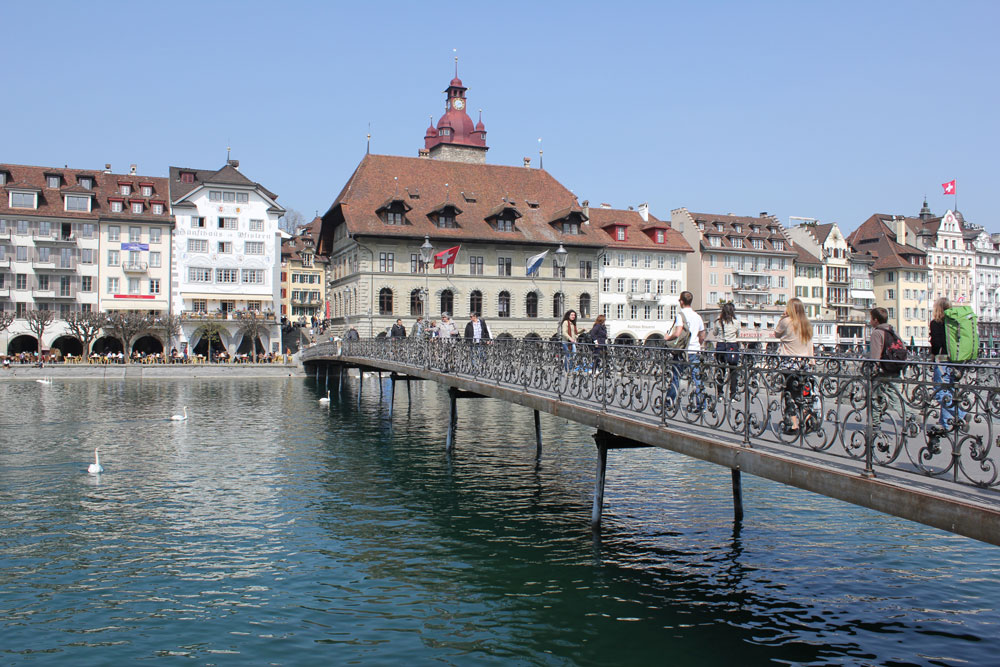
Just an hour south of Zurich by train, Lucerne sprawls along the shores of Lake Lucerne, surrounded by an imposing Swiss Alpine landscape in north-central Switzerland - most noticeably Mount Pilatus and Rigi. The city’s urban development traces its lineage back to a modest 8th century Benedictine cloister named St. Leodegar monastery. A small fishing village would begin to independentally grow around the monastery and down the Reuss River. By the 14th century, migration between northern and southern Europe made Lucerne’s location ideal for a bustling trading center. Medieval fortifications began to rise up at the mouth of the river, leading to the iconic angled wood bridges with defensible capabilities across the Reuss River that still define the city today. Upon joining an alliance with neighboring cities in the region - referred to as the “Swiss Confederacy” - Lucerne became a self-sufficient and democratically-held city leading to an era of expansion and infrastructure development.

City Boat Docks

Luzern Fountain

Pedestrian waterfront along Schweizerhofquai
Today, Lucerne is the capital of the Canton of Lucerne and the most populous city in Central Switzerland, with major networks in transportation, telecommunications, and government activities for the region, as well as a major destination for international tourism. Other than automobile, excursions in the area of Central Switzerland go through Lucerne’s central train station, bringing in swarms of tourists in search of nostalgic amusement. The city’s main draw - the well-preserved medieval Old Town - is located just north of the Reuss River, still exhibiting original half-timber building, exhausted remnants of old town fortification walls / watch towers scattered from the city to the hillside beyond, and famous historic covered bridges (the oldest in Europe). However, Lucerne doesn’t just dwell on the past, with new progressive developments such as the new cultural and congress center (KKL) on the south bank of the river that delivers fashionable international magnetism to the historic city throughout the entire year, even hosting some of Switzerland’s more acclaimed music events.

Aerial of city

Pedestrian Bridge - Rathaussteg

Historical covered footbridge - Kapellbrucke (Chapel Bridge)